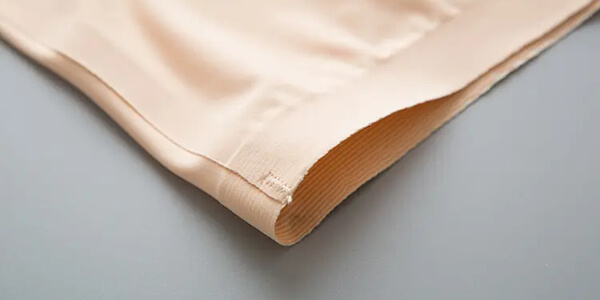
The Essential Facts About Glue in Bonded Underwear
The glues used to make bonded underwear, such as bonded panties and bonded bralettes, are not all the same. The most commonly used is polyurethane-based glue, which is tough, flexible, and durable, making it very conducive to high-quality bonding.
Bonded underwear has become increasingly popular in recent years for its seamless, streamlined look and comfortable fit. But have you ever wondered how these garments are made to be so sleek and form-fitting? The answer lies in the adhesive materials used in the manufacturing process.
Bonded underwear, or seamless or laser-cut underwear, is made by bonding two or more layers of fabric using heat, pressure, and adhesive materials. The adhesive acts as a binding agent, fusing the layers of fabric and creating a seamless, sleek finish. But not all adhesives are created equal, and it's essential to understand the different types of glue used in bonded underwear.
One of the most commonly used adhesives in bonded underwear is polyurethane-based glue. This type of glue is strong, flexible, and durable, making it ideal for use in undergarments that need to withstand frequent wear and washing. The polyurethane-based adhesive is also heat-resistant, which is essential in manufacturing, as the fabric layers must be bonded together using heat and pressure.
Another type of adhesive used in bonded underwear is silicone-based glue. This type of glue is known for its water resistance and ability to adhere to various surfaces. In lingerie, silicone-based glue is often used to create non-slip grips on bra bands or to hold underwear in place without additional elastic or binding.
Brands like Commando, Spanx, and Natori are known for using bonded construction in their seamless underwear and shapewear. Commando's patented "raw-cut" edges and invisible seams are achieved through specially designed polyurethane-based glue. At the same time, Spanx's "SmartGrip" technology incorporates silicone-based adhesives to keep garments in place.
While adhesive materials in bonded underwear may raise concerns about skin irritation or allergic reactions, reputable brands use safe and tested materials that meet industry standards. It's essential to read labels and care instructions carefully and always follow the manufacturer's recommendations for cleaning and storage.
In conclusion, glue in bonded underwear plays a crucial role in achieving the seamless, comfortable fit that has made these garments so popular. By understanding the different types of adhesives used and the brands that prioritize quality and safety, consumers can make informed choices when purchasing bonded underwear.
